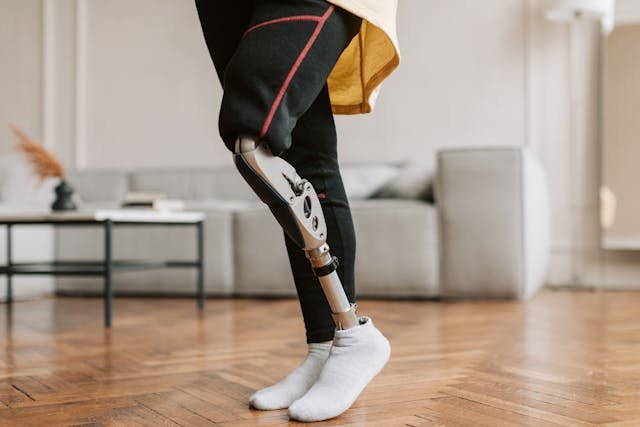When a child is born with a limb that is missing or underdeveloped, it brings up many questions for the family. Why did this happen? What kind of care will be needed? How will the child grow and adapt? These are all natural concerns. Congenital limb deficiencies, though rare, affect thousands of children every year across the world—including in India. With the right understanding and timely support, children with these conditions can grow up to live full, active lives.
At Robobionics, we work with families across India who are navigating this journey. From diagnosis to early prosthetic care, we focus on offering solutions that are thoughtful, accessible, and child-friendly. This article will help you understand what congenital limb deficiencies are, what causes them, the types you might see, and how early intervention makes a powerful difference.
Understanding What Congenital Limb Deficiencies Are
Congenital limb deficiencies are conditions where a baby is born without a part of a limb or with a limb that is not fully formed. These conditions happen before birth and are usually noticed either during pregnancy scans or right after delivery.
When and How These Conditions Begin
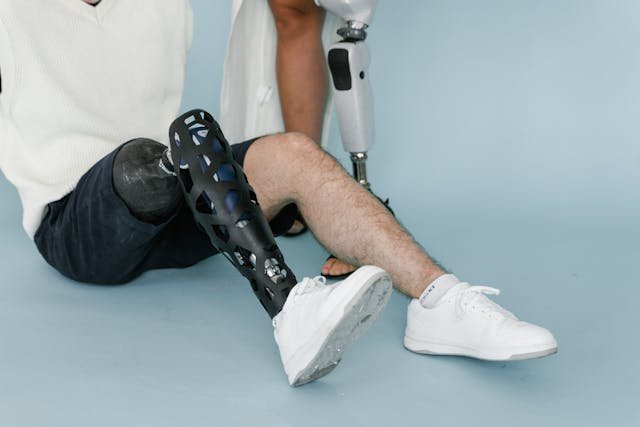
Limb development in the womb starts early in pregnancy. Between the fourth and eighth week, the baby’s arms and legs begin to form. If something disrupts this process—like a genetic issue, a problem with blood flow, or an environmental factor—the limbs may not develop fully. The result could be a shorter limb, a missing hand, or other differences in shape or length.
In most cases, these changes happen early in pregnancy, and the rest of the baby’s growth continues normally. The condition usually affects only the limb and not other parts of the body, though this depends on the specific cause.
At Robobionics, we often meet families who discover their child’s condition at birth and are unsure where to turn. Understanding the timing helps families know that this is not their fault—it’s something that developed naturally, long before anyone could intervene.
Diagnosing Limb Differences
In some cases, a limb difference is picked up during an ultrasound before birth. But many times, it is first noticed at delivery. Doctors will usually examine the baby to check how the limb is shaped, whether joints are present, and if any muscles or bones are underdeveloped. In some cases, imaging tests like X-rays or MRIs help understand the internal structure.
This early diagnosis helps in planning the right care. It allows doctors, prosthetists, and therapists to work together to support the child’s movement, balance, and independence as they grow.
Robobionics works with pediatric orthopedic teams to begin prosthetic planning as early as six to nine months old, depending on the child’s development. The earlier the plan begins, the better the outcomes.
Why Early Understanding Matters
Knowing early what kind of limb difference a child has helps parents make decisions that shape their child’s growth. Whether it’s therapy, early prosthetic fitting, or emotional support, early understanding gives families a head start.
It also helps the child adapt from a young age. Kids are incredibly resilient. When they begin learning with a prosthetic or assistive tool early, they often adapt faster and grow more confident.
At Robobionics, we’ve seen children who received early support reach milestones like crawling, standing, and walking right on time. That’s why early diagnosis and early guidance are so important.
Exploring the Causes Behind Congenital Limb Deficiencies

It’s natural for families to want to know why a child was born with a limb difference. While not every case has a clear answer, there are some common reasons doctors and researchers have identified over the years.
Genetic and Chromosomal Factors
Sometimes, limb deficiencies are linked to a genetic condition or chromosomal change. These can affect how the body develops in the womb. In certain syndromes, a limb difference is just one part of a larger set of physical differences. Other times, it happens on its own.
Genetic testing may be suggested if doctors suspect a known condition. However, in many cases, limb differences happen randomly and are not passed down through families. That means parents often do nothing to cause it, and it’s not likely to happen again in future pregnancies.
At Robobionics, we guide families gently through these conversations, focusing not on blame—but on support and possibilities.
Problems With Blood Flow During Development
One of the more common causes of isolated limb deficiencies is a disruption in blood flow during the early weeks of pregnancy. If a part of the limb doesn’t receive enough blood, it may stop growing or grow in a different way. This can lead to missing fingers, short limbs, or fused bones.
This kind of disruption often has no clear cause and can happen without warning. It’s not something a parent can predict or prevent.
Understanding that these things can happen naturally helps parents shift their focus to what can be done next—how to support their child’s development from here forward.
Environmental and External Influences
There are some cases where exposure to certain medications, infections, or environmental toxins may increase the chance of limb development issues. In rare cases, certain viral infections in pregnancy or medications used during early weeks can interfere with limb growth.
However, these are not common, and in most cases, doctors do not find any direct cause. Many children with congenital limb differences have no known risk factors.
Robobionics supports awareness and education around healthy pregnancy practices while also reinforcing that most limb differences are not caused by anything a parent did or did not do.
Types of Congenital Limb Deficiencies and How They Are Managed
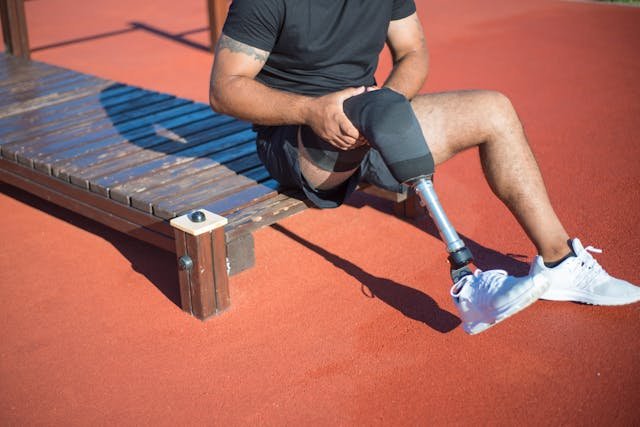
Limb differences can appear in many forms. Some may involve a missing part of a limb, while others may affect the shape, length, or position of the limb. Understanding the type of deficiency helps in planning the right support—whether that means therapy, assistive devices, or early prosthetics.
Transverse and Longitudinal Deficiencies
The two main types of congenital limb differences are transverse and longitudinal deficiencies. In transverse deficiencies, the limb is completely missing beyond a certain level, almost as if it were cut across. For example, a child may be born with a full upper arm but no forearm or hand. This type is more common and often easier to fit with a prosthetic, as the bone and muscles above the deficiency are typically strong and well-formed.
Longitudinal deficiencies are different. In these cases, certain bones within the limb are missing or underdeveloped. A child may be born without a radius bone in the forearm or without the fibula in the leg. These can affect joint function and may require surgery or orthopedic support in addition to prosthetic care.
At Robobionics, we work closely with orthopedic surgeons to understand the exact limb structure before designing any prosthetic. We tailor our devices to support both form and function, whether the limb is partially formed or absent beyond a certain point.
Upper Limb and Lower Limb Differences
Congenital limb deficiencies can affect either the upper or lower limbs—or sometimes both. Upper limb differences, such as missing fingers or arms, affect tasks like grasping, reaching, or playing. Lower limb differences impact standing, balance, and walking. Each type presents unique challenges, and the goals of support change depending on which limb is involved.
For upper limbs, early prosthetics often help with bilateral activities, like crawling or balance, even before fine motor skills are developed. For lower limbs, early fitting is usually focused on helping the child stand and walk as close to normal development age as possible.
Robobionics provides early-stage upper and lower limb prosthetic solutions that are light, soft-lined, and designed to match a child’s natural movement patterns. We focus on comfort and ease of use so that children enjoy wearing them, not just tolerate them.
Partial vs. Complete Absence of Limbs
Some children are born with only part of a limb missing, such as one or two fingers, or a shorter forearm. Others may have a complete absence of a limb segment. Partial deficiencies often don’t need full prosthetics but may benefit from assistive devices that improve grip or balance. Complete deficiencies, especially in the lower limbs, typically require full prosthetic support to assist with standing and walking.
The level of the deficiency determines how and when a prosthetic is introduced. For partial hand differences, prosthetics may not be needed until the child shows signs of frustration or reduced function in daily activities. For full limb absence, early fitting is usually encouraged to help with physical development and emotional adjustment.
At Robobionics, we assess each child’s specific need, limb function, and developmental stage. We never use a one-size-fits-all approach because every child’s difference—and every child’s potential—is unique.
Early Intervention: The Key to Healthy Development
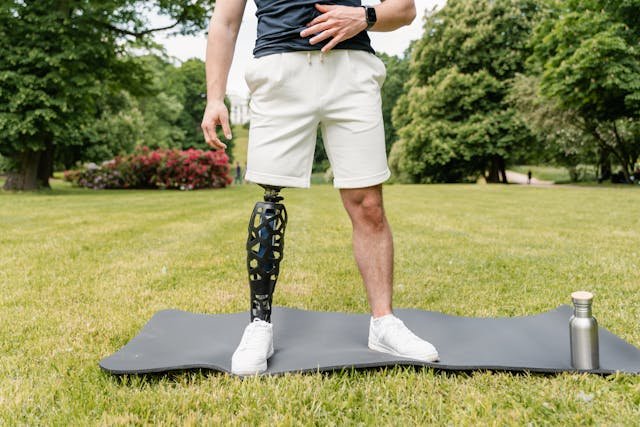
Early intervention plays a powerful role in helping children with congenital limb deficiencies grow and thrive. Starting support in the first few months or years of life helps the child build strength, adapt to movement, and gain independence. It also helps families feel more confident and informed during a time that can feel uncertain. The goal of early intervention is not to fix the child—but to support their ability to move, play, and learn just like any other child.
Starting With Physical and Occupational Therapy
One of the first steps in early intervention is therapy. Physical therapists help the child build strength, improve posture, and learn how to move using their body in a safe and balanced way. If the child has a lower limb difference, therapy may focus on standing and walking. If it’s an upper limb difference, therapy helps with balance, reaching, and using the available limb more effectively.
Occupational therapy focuses on daily activities like grasping, feeding, and playing. It helps children build the motor skills they need to interact with the world around them. Therapy can also prepare the child to use a prosthetic by training muscles and practicing certain motions.
At Robobionics, we coordinate with therapists to make sure any prosthetic support we provide works seamlessly with the child’s therapy goals. This helps the child make steady progress at their own pace.
When to Introduce a Prosthetic Limb
For many children, a prosthetic is introduced between 6 to 18 months of age. This is usually around the time they start crawling or standing. The idea is to help the child include the prosthetic in their natural development. If the child begins using a prosthetic early, it often becomes a part of how they explore and learn about their body. It doesn’t feel foreign—it feels familiar.
Prosthetics for young children are very different from adult devices. They are lightweight, flexible, and designed for comfort. At first, the focus is on balance and symmetry—not complex function. As the child grows, the prosthetic can be upgraded to support more tasks like grasping, bending, or walking on uneven surfaces.
Robobionics designs child-specific prosthetics that grow with the child. We adjust them regularly and make sure the child is always comfortable, confident, and curious about movement.
Supporting Families Through the Process

Parents and caregivers are the most important part of early intervention. When families are informed, supported, and empowered, children benefit the most. Learning how to care for a limb difference, how to manage a prosthetic, and how to respond to the child’s emotional needs can make all the difference.
Many families worry about how others will react to their child’s limb difference or whether the child will be able to fit in at school or during play. These concerns are valid—but they can be eased with knowledge and community. When families are connected with prosthetic experts, therapists, and peer networks, they realize they are not alone—and neither is their child.
At Robobionics, we not only fit prosthetics—we guide families through every step. We offer education, emotional support, and ongoing care so that families feel ready to support their child’s full potential.
The Role of Technology in Shaping the Future of Pediatric Prosthetics
Prosthetic technology for children has come a long way in just a few years. Innovations are making devices lighter, more adaptable, and more fun to use. As technology continues to grow, so does the potential for children with congenital limb differences to do more—with greater comfort and confidence.
Advancements in 3D Printing for Custom Fit
3D printing has changed how prosthetics are made for children. It allows for faster, more affordable customization. With digital scans, a prosthetist can design a limb that matches the child’s exact measurements. The result is a better fit with fewer adjustments. This is especially helpful for children who grow quickly and may need frequent changes to their devices.
The flexibility of 3D printing also allows for creative designs. Children can choose colors, patterns, or even themes that make the prosthetic feel like a part of their personality. This personal touch encourages them to wear the device more often and with pride.
At Robobionics, we use 3D printing to create light, ergonomic prosthetics that are as unique as each child. Our designs focus on ease of use, safety, and comfort to encourage early acceptance.
Myoelectric and Bionic Options for Older Children
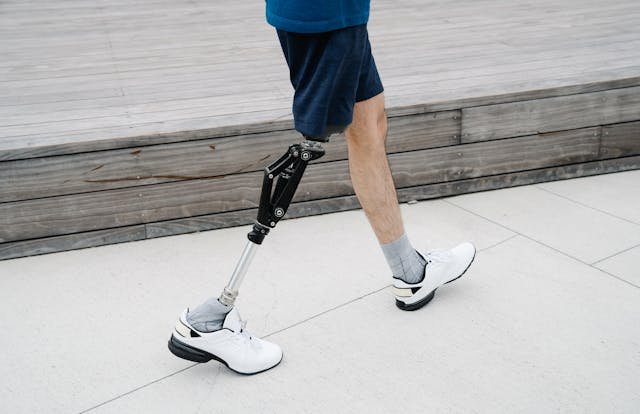
As children grow, some may benefit from more advanced prosthetics that allow them to move fingers or grip objects using muscle signals. These are called myoelectric or bionic prosthetics. They respond to tiny movements in the muscle and translate them into actions like opening or closing a hand.
While these are not typically used for infants, they can be introduced during the school years when a child is ready to learn how to use them. These devices require training and patience but can offer more independence in daily tasks.
Robobionics is leading the way in making advanced prosthetics more accessible and affordable in India. Our Grippy™ hand, for example, has been specially designed to be lightweight and intuitive for users of all ages, including older children.
Creating Child-Friendly Designs That Empower
Perhaps the most important innovation isn’t the hardware—it’s the mindset. The best prosthetic designs for children are the ones that make them feel excited, confident, and capable. Whether it’s a superhero-themed arm or a foot that lets them run and play with friends, the goal is to make the prosthetic feel like a part of who they are—not something they have to hide.
The future of pediatric prosthetics will be about blending medical care with creativity and empowerment. And as technology improves, the focus will remain on helping every child reach their potential in their own unique way.
At Robobionics, we’re proud to be part of this future. We believe that every child deserves a chance to explore, to move, and to feel powerful in their own body—no matter how their limb is shaped.
Conclusion
Congenital limb deficiencies can feel overwhelming at first. But with understanding, early support, and the right tools, they become a part of a larger story—one of strength, adaptation, and possibility. Every child is different, and every path is personal. What matters most is that each child is given the support they need to grow, move, and thrive.
From early diagnosis to customized prosthetics and supportive therapies, early intervention opens the door to a full and active life. And with new technologies leading the way, the future for children with limb differences is brighter than ever.
At Robobionics, we are committed to walking beside every child and family on this journey. Our team offers gentle guidance, tailored prosthetics, and a vision of care that looks beyond limitations—to the potential in every step.
If your child has a congenital limb difference and you’re looking for support, we’re here to help.



